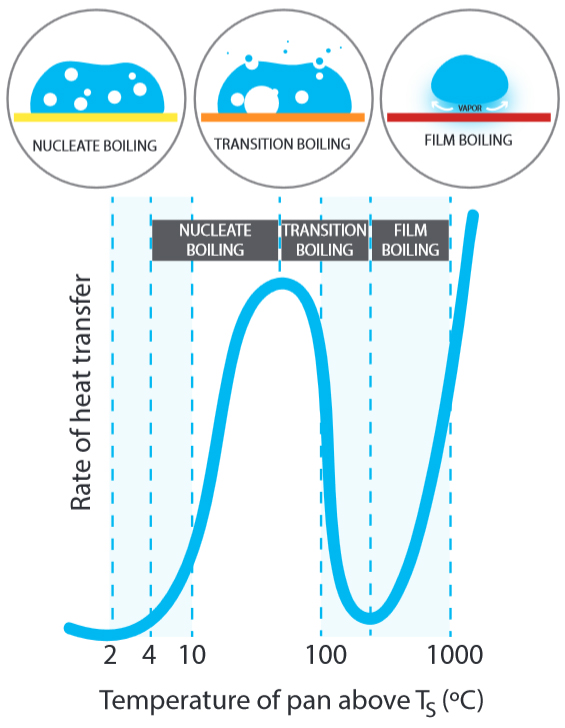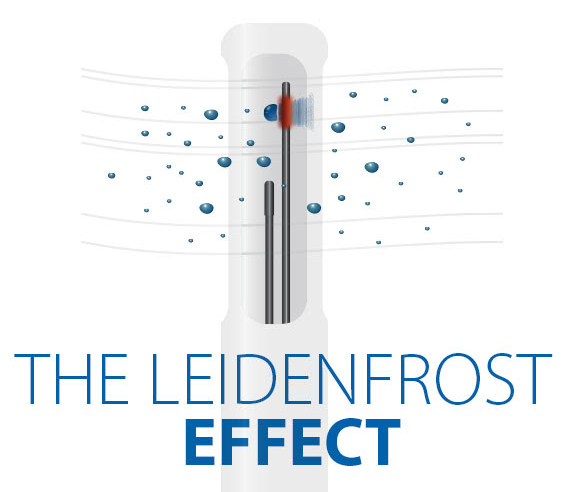The effect is named after Johann Gottlob Leidenfrost, who discussed it in "A Tract About Some Qualities of Common Water" in 1756. For over 250 years there hasn't been a practical application until now. The high 300°C sensor overheat of Kurz WGF make it a truly unique flow measurement device among standard thermal mass devices.

By maintaining a high signal-to-noise ratio and a high sensor overheat, mist particles vaporize on impact with the heated sensor. By utilizing the Leidenfrost Effect, the leading edge of larger droplets vaporize to steam, which diverts the remaining water around and away from the heated sensor. The unique design of the WGF allows it to accurately monitor the dry gas component in a wet gas flow regardless of changing condensation levels.
Regardless of manufacturers' claims, daily and seasonal temperature changes in wet gas environments cause standard thermal meters to report erratically high flow readings. As the flow stream temperature decreases, more water condenses out of the gas causing a standard thermal meter to read high because the water contacting the sensor is recorded as dense air. Within an active condensing gas flow, the low overheat (less than 50°C) of standard products make them incapable of accurately reading the dry gas flow within a wet gas environment.
The patent pending Kurz 454FTB-WGF flow meter is not a standard thermal flow meter. The Kurz WGF is not affected by water droplets in the flow stream and is the only thermal flow meter suitable for biogas and condensing gas environments found in digesters, landfills, animal feeding operations, mining, and wet stacks.
Process Engineered Products is the Authorized Manufacturer’s Representative for Kurz Instruments.


